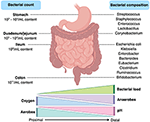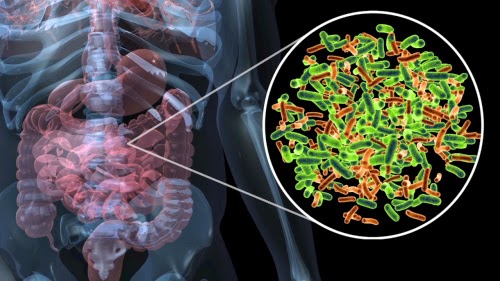

Moreover, the types of bacteria within the small intestine are different than the types of bacteria within the colon. The number of bacteria is greatest in the colon (usually at least 1,000,000,000 bacteria per milliliter or ml of fluid) and much lower in the small intestine (less than 10,000 bacteria per ml of fluid). The entire gastrointestinal tract, including the small intestine, normally contains bacteria. The small intestine is approximately 21 feet in length and begins at the duodenum (into which food from the stomach empties), followed by the jejunum and then the ileum (which empties the food that has not been digested and absorbed in the small intestine into the large intestine or colon). The main purpose of the small intestine is to digest and absorb food into the body. The small bowel, also known as the small intestine, is the part of the gastrointestinal tract that connects the stomach with the colon. It has been theorized that SIBO may be responsible for the symptoms of at least some people diagnosed with irritable bowel syndrome.

There is a striking similarity between the symptoms of irritable bowel syndrome ( IBS) and SIBO. There are many conditions associated with SIBO including diabetes, scleroderma, Crohn's disease, and others. Small intestinal bacterial overgrowth (SIBO) refers to a condition in which abnormally large numbers of bacteria (usually defined as at least 100,000 bacteria per ml of fluid) are present in the small intestine, and the types of bacteria in the small intestine resemble more the bacteria of the colon than the small intestine.


 0 kommentar(er)
0 kommentar(er)
